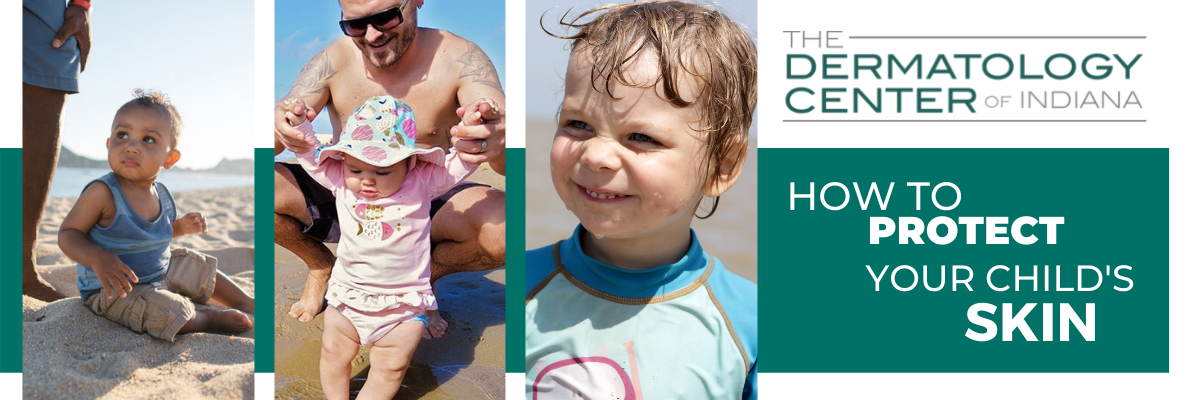
Skin cancer is the most common cancer in the United States and, unfortunately, it only takes one serious sun burn during childhood or adolescence to nearly double a person’s chance of developing melanoma later in life.
As parents, we can’t protect them from everything—but we can try.
Caring for a newborn’s or infant’s skin is critical to their health as they grow—especially before they can make decisions to protect themselves. But what does that entail? What sunscreen is safe for infants and toddlers? How much time in the sun is okay for them? How do I care for them if they get a sunburn?
We’ve compiled a list of practices that you can perform as a parent to protect your child from harmful UV rays and overexposure.
1. Stay in the shade
This may seem obvious, but shade is the best form of protection for your baby from the sun. If being outside is non- negotiable, keep your child in the shade as much as possible. If you can’t find shade, create your own—keep an umbrella, canopy, or stroller hood handy.
2. Sun-protective clothing
Resist the urge to put your little one in shorts or a short-sleeved onesie on a hot, sunny day. Light, long-sleeved shirts and pants are an excellent protective layer for their sensitive skin. UPF clothing, specifically designed to protect skin from UV rays, is also great for infants. To cap it all off, a wide-brimmed hat and sunglasses provide a ton of personal shade (if they’ll stand to keep it on).
3. Use sunscreen sparingly
If your child is younger than six months old, try to limit the frequency and amount with which you apply sunscreen on them. However, if shade and adequate clothing aren’t available, a 30 SPF, broad-spectrum, water-resistant sunscreen with titanium dioxide or zinc oxide is recommended. Reapply every two hours or immediately after swimming.
4. Look for signs of overheating
Direct sun is dangerous, but with sunshine comes heat. According to What to Expect, babies who are overheated can be irritable and restless. The easiest way to tell if your baby is too hot is to feel the nape of their neck to see if it’s sweaty or overly warm to the touch. They also may have flushed cheeks or have visible sweating and rapid breathing. If one or more of these signs are present, take them inside and out of the sun.
“What about when kids are older?”
As your child grows to a conversational age and into adolescence, they’ll need some tips too. But how can we communicate these practices to kids?
According to the American Academy of Dermatology Association, children should take the same precautions adults take— we just need to be clear about communicating with them.
1. Use sunscreen, cover up, seek shade
Sound familiar? We should tell children of all ages to wear SPF 30 or greater sunscreen when going outside. Remind them to use sunscreens that protect from both UVA and UVB rays, or ones that offer “broad-spectrum” protection.
2. Be careful around water, sand and snow
These all reflect sunlight, making the damaging rays of the sun much stronger. If your child is out and about in the sun, remind them to limit time near these surfaces and elements.
3. What is skin cancer?
This is a tough question to answer, but it’s important for them to understand why all of these precautions exist. Explain to your child that cancer is something that kids rarely get, so they don’t need to think about it much. But when grown ups get skin cancer, it’s often because they didn’t protect themselves when they were younger.
It’s also worth telling your child that it’s impossible to tell who will and won’t get skin cancer, so it’s best to protect yourself. You can also remind them that limiting sun exposure will lessen the amount of wrinkles and spots they get as they get older.
Protecting your children from the dangers of skin cancer (let alone parenting in general) is a daunting task. But with these tips and expert recommendations, you’ll have an excellent foundation to keep your child safe and raise skin cancer awareness in your family.
If you’re looking for your ideal sunscreen, an annual skin check, or just want to know more, contact the Dermatology Center of Indiana today!